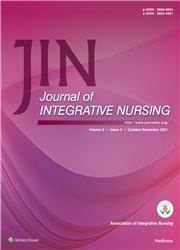Pediatric thermal burn injury: A retrospective analysis from pediatric care institutes, Eastern India
Q4 Nursing
引用次数: 0
Abstract
Objective: Pediatric burns pose difficult healthcare issues in underdeveloped nations. Due to the scarcity of pediatric burn care facilities and qualified burn-care staff, patients are frequently referred from a rural hospital. This study explores the burn-treatment approach that could be used in rural hospitals in the absence of a dedicated pediatric burn care facility. Materials and Methods: A retrospective analysis of clinical data of 199 children who received treatment for burn-injury in an isolated general surgical ward. Wound debridement under anesthesia at the earliest was the cornerstone of the treatment plan for this cohort. Until the wounds healed, the treatment was repeated every alternate day. The patient's demographic data, number of surgical dressings, length of hospital stay, and outcome were analyzed. Results: The mean age of the patients was 51.68 ± 23.79 months. The male-female ratio was 1.45:1. The survival rate was 99.00%. The disability rate was 4.52%. Univariate logistic regression identified the age group, total body surface area affected, depth of the wound, and time of intervention as statistically significant variables (P < 0.05) predicting the disfigurement. Multivariate logistic regression identified the time intervals between surgical intervention and injury as an important predictor of morbidity. In addition, delayed presentation and delayed intervention led to a longer hospital stay, and more interventions than the early intervention cohort. Conclusions: Early debridement accelerates recovery and lessens the need for future skin grafts or contracture procedures. This approach can be used in rural hospitals as well because pediatric burns can be manageable in an isolated general ward.小儿热烧伤:来自印度东部儿科护理机构的回顾性分析
目的:儿科烧伤构成困难的医疗保健问题在不发达国家。由于缺乏儿科烧伤护理设施和合格的烧伤护理人员,患者经常从农村医院转诊。本研究探讨了烧伤治疗方法,可用于农村医院在缺乏专门的儿科烧伤护理设施。材料与方法:回顾性分析在隔离普通外科病房接受烧伤治疗的199例患儿的临床资料。最早在麻醉下进行伤口清创是本队列治疗计划的基石。直到伤口愈合,治疗每隔一天重复一次。分析患者的人口统计数据、手术敷料次数、住院时间和结果。结果:患者平均年龄51.68±23.79个月。男女比例为1.45:1。生存率为99.00%。致残率为4.52%。单因素logistic回归发现,年龄组、受影响的体表面积、伤口深度和干预时间是预测毁容的有统计学意义的变量(P < 0.05)。多因素logistic回归确定手术干预和损伤之间的时间间隔是发病率的重要预测因素。此外,与早期干预组相比,延迟就诊和延迟干预导致了更长的住院时间和更多的干预。结论:早期清创加速恢复,减少未来皮肤移植或挛缩手术的需要。这种方法也可以在农村医院使用,因为儿科烧伤可以在一个孤立的普通病房管理。
本文章由计算机程序翻译,如有差异,请以英文原文为准。
求助全文
约1分钟内获得全文
求助全文
来源期刊

Journal of Integrative Nursing
Nursing-General Nursing
CiteScore
0.40
自引率
0.00%
发文量
3
审稿时长
17 weeks
 求助内容:
求助内容: 应助结果提醒方式:
应助结果提醒方式:


